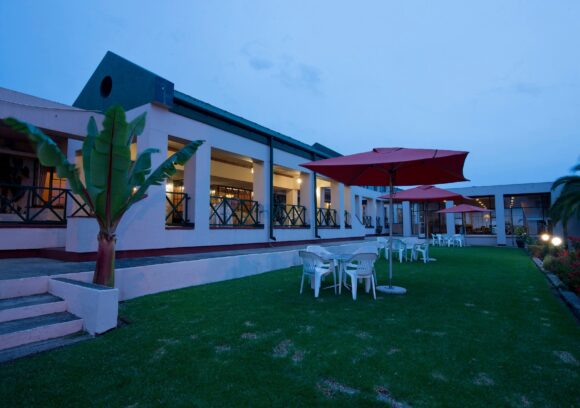Zim fails to restructure debt as arrears balloon
Zimbabwe is battling to restructure a US$1,5 billion worth of Debt Outstanding and Disbursed (DOD) maturing from 2021 onwards, Business Weekly can report.
The debt, if not serviced, will add to the US$6,6 billion debt that is already in arrears.
Arrears accumulation will continue to hinder the post-pandemic economic recovery and transformation, experts say.
According to information contained in the country’s Arrears Clearance Debt Relief and Restructuring Strategy (ACDRR Strategy) released by Treasury in April this year, Zimbabwe remains in debt distress with an unsustainable Public and Publicly Guaranteed (PPG) external debt overhang amounting to US$14.4 billion, as at end December 2021.
The country has been unable to meet its debt servicing obligations and has, therefore, been accumulating external debt arrears since 2000.
Another US$1,5 billion DOD is maturing this year and will have to be serviced lest it adds to an already unsustainable US$6,6 billion debt already in arrears.
According to the ACDRR Strategy signed off by Finance and Economic Development Minister Mthuli Ncube and published by the Zimbabwe Public Debt Management Office, arrears remain a major challenge to the economy, making up over 77 percent of total external debt.
“The continuing accumulation of arrears is also seriously undermining the country’s credit rating and is severely compromising the country’s ability to attract foreign direct investment, as well as to mobilise direct budget and balance of payments support.
“Zimbabwe is also currently losing out on opportunities to access concessional facilities
from the International Financial Institutions (IFIs) such as the World Bank’s IDA, AfDB’s ADF and
IMF’s Extended Credit Facility (ECF),” reads the ACDRR Strategy in part.
Almost all external debt owed to multilateral development financial institutions (MDBs)
are now in arrears, reads the ACDRR Strategy in part. Zimbabwe has been trying for close
to a decade to restructure its debts but several initiatives have failed to yield any positive
results.
In 2015, the country put together a country financing programme popularly known as the
Lima Plan.
The arrears clearance plan was presented to creditors during the IMF/World Bank annual
meetings in the Peruvian capital, Lima in October 2015.
Despite being endorsed by the U.S., the U.K., Germany, France, the World Bank, and the
IMF, the country is still saddled with debts, more than five years later and has since come
up with a new arrear clearance strategy.
But with the US$6,6 billion still to be restructured, another US$1,5 billion has fallen due
for payment.
Projected Debt Service between 2021 and 2025 amounts to US$769,53 m with US$168,22
million expected to be paid this year to both multilateral lenders (US$36,47 million) and
bilateral lenders (US$131,75 million).
Authorities had planned to undertake comprehensive negotiations for restructuring of all
the bilateral DOD to include grace period and longer-term maturities, to avoid
accumulation of arrears after the implementation of an arrears clearance strategy.
This was meant to ensure debt sustainability post-arrears clearance, reads the ACDRR
Strategy in part.
Zimbabwe requires on average US$140 million annually, hence, the need for debt
restructuring.
But efforts to restructure the debt before it falls due have not yielded any positive results.
In fact, negotiations to restructure this particular debt have not started, according to a
senior official in the Ministry of Finance.
“The failure to restructure the US$1,5 billion debt could be related to the country’s
efforts to restructure the US$6,6 billion long-standing arrears,” said Trigrams economic
analyst Walter Mandeya.
“We have not enjoyed any traction on our efforts to restructure our debts so it’s not a
surprise we have also failed with this one,” Mandeya added.
The implementation of an Arrears Clearance, Debt Relief, and Debt Restructuring
Strategy is the only path for Zimbabwe to access new external financing required for
post-Covid-19 recovery and for achieving Zimbabwe’s economic development agenda
and its Vision 2030 aspirations.
If Zimbabwe manages to clear its arrears, it would get fresh capital.
Arrears clearance will also free some of the interest payments that are being charged on
an already ballooned debt.
In a radio interview in 2016, then Finance Minister Patrick Chinamasa revealed that
Zimbabwe was paying 15 percent a year on its World Bank loan.
Meanwhile, the outstanding and disbursed debt not yet due to the bilateral creditors
includes US$159 million owed to the Paris Club and US$1,231 million owed to Non-Paris
Club.
Government plans to negotiate for a cut-off debt that will ensure debt sustainability.
“All loans signed before the cut-off debt will be negotiated for comprehensive debt
relief.
“For all loans signed after the cut-off debt, Government will negotiate for a concessional
restructuring arrangement which will have longer grace period and maturity, “reads the
ACDRR Strategy in part.-eBusiness Weekly










